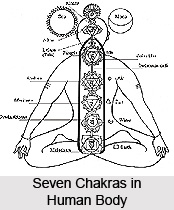 The brahmacatyapratisthayam vltyalabhah sutra delineates about the conditions during brahmacarya, or the time of celibacy and its orders. The moment one is free from sexual immoralities, he or she gains a kind of supreme energy. It is not necessary that one has to be a staunch abstainer from a family life and procreation; it is advised never to be a promiscuous person and commit adultery. It is customary to restrict the over-indulgence in pleasures. Specially, the student and educational period should be taken into heed, because pious ness once lost is lost forever.
The brahmacatyapratisthayam vltyalabhah sutra delineates about the conditions during brahmacarya, or the time of celibacy and its orders. The moment one is free from sexual immoralities, he or she gains a kind of supreme energy. It is not necessary that one has to be a staunch abstainer from a family life and procreation; it is advised never to be a promiscuous person and commit adultery. It is customary to restrict the over-indulgence in pleasures. Specially, the student and educational period should be taken into heed, because pious ness once lost is lost forever.
brahmacarya continence, chastity
pratislhayam well established
virya energy, vigour, potency, valour
labhah gained, obtained, acquired
When the sadhaka is steadfastly established in continence, knowledge, vigour, fearlessness and energy rush to him.
The celibate transforms the energy of reproduction into spiritual energy (ojas), bringing in lustre.
Brahmacarya, in its sense of sexual control or celibacy is often misapprehended.
Sexual energy is the most elementary expression of life force. It is extremely potent, and it is customary to arrest and channel it. In no way should one loathe it. On the contrary, one should respect and esteem it. He who seeks merely to suppress or subdue his sexual energy is in effect belittling his own origins. There is of course a moral aspect to sexual behaviour, but cultural differences permit vastly different behaviour. Some cultures allow one wife, some three, some many. Along parts of the Himalayas a woman may have several husbands. Often what is referred to as call sexual immorality offends less against the code of brahmacarya, than against the other injunctions of yama. One can envisage the case of a married man who commits adultery with a married woman, and lies when he is suspected. He has definitely offended, by the pain he gives, against ahimsa, by his lies, against satya, by taking another man`s wife, against astey, by his greed, against aparigraha. The sexual misdemeanour in itself shrinks in comparison.
A yogi may or may not practise total abstinence; the great yogi Vasista had one hundred children, yet he was called a brahmacari. Ancient yogis studied the conjunction of stars and planets to discover the most auspicious moment for procreation. Continence or control in no way negates or contradicts the enjoyment of pleasure. Assuredly they enhance it. It is when sensory pleasure is the sole motivating factor that brahmacarya is encroached upon.
The life force, which finds sexual expression, also serves to find the warmth of one`s emotions, the passions of one`s intellect, and one`s idealism. As the physical essence is sperm or egg, likewise, the spiritual essence is the soul. Their relationship should be based on co-operation. It is the creative relationship of purusa and prakrtt which leads to freedom. Renunciation is a positive process of disengagement, not a sterile rejection. In the past, most great yogis were householders. One must learn to husband and control the life force, because it provides the energy, which carries one towards goals other than reproduction. One should also remember that reproduction by those practising brahmacarya would tend to be of a higher order than that which is carried out inconsiderately or promiscuously.
The religious or educational studentship of adolescence is also termed brahmacarya. That is because the enormous outburst of energy, which is released by puberty, needs to be controlled and channelled for the child`s all-round growth. If a child were to indulge in sexual activity, the moment he or she was biologically ripe, a large part of his or her human potential would be thrown away.
One needs application, study and idealistic motivation if one wants to achieve anything. If, by youthful licentiousness, the concentrated source of one`s energy has already been wasted, one will rediscover it later in life only with tremendous difficulty. Lack of control can lead to despair, dejection and depression. But if energy is ample and controlled, one still has hope and confidence, and the mind turns automatically towards higher thoughts.




















